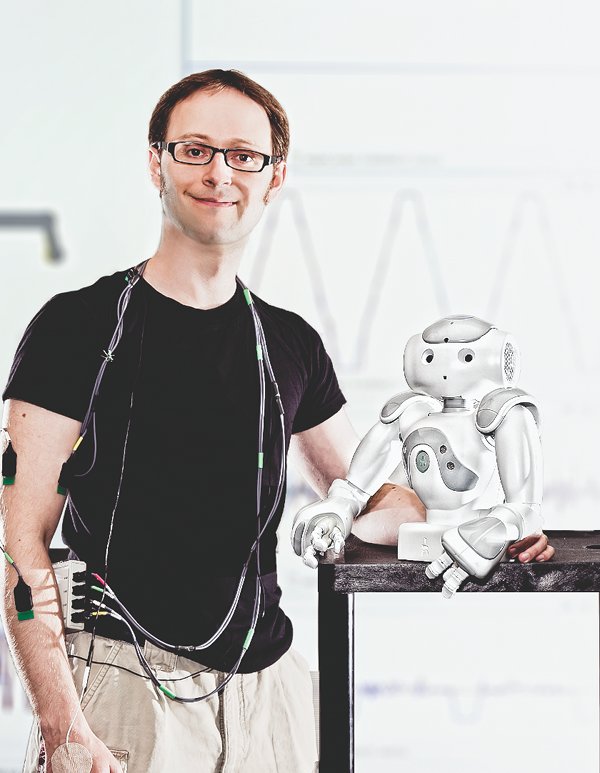Photography by Darren Wolf
Who: Patrick Pilarski
Age: 30
Experience: He has a robot in his office. But this isn’t unusual at the University of Alberta’s department of computing science, where he’s a postdoctoral fellow with the Reinforcement Learning Artificial Intelligence Group. Pilarski has a Ph.D in electrical and computer engineering from the U of A and he researches artificial intelligence, human-machine interfaces, machine learning, biomedical engineering and robotics. He helps develop prosthetics imbued with A.I. technology. Pilarski is also the co-inventor of technology used in a hand-held medical device that can diagnose diseases such as cancer. His right brain is also in top form; he’s the co-editor of DailyHaiku, an international journal of contemporary English-language haikus, and the author of several books, including Huge Blue, a collection of poetry that was published by Leaf Press in 2009.
“We develop artificial intelligence so that a machine can learn to the same degree or even better, than a human could. The smaller-level bits of [A.I.] involve solving problems like doing better Web searches or targeting ads to the right people. But everything from intelligent transportation, like driverless cars, to intelligent artificial limbs – one of my areas of focus – can use the principles of A.I.”
“Electrical prosthetics can operate using electrodes that adhere to the skin, on say a bicep or a tricep. You stick it on and it will record through the skin how the muscle works. When muscles flex and contract they give off very small changes in electrical potential. There are resulting electrical changes in the skin; this is what the sensors record, and we can then use these recording to control a prosthetic.”
“We’re working on prosthetics that use artificial intelligence, whereby the patient can actually give it feedback, called ‘reinforcement learning.’ The amputee can give a limb positive or negative reinforcement by pushing a button that uses a number system – positive numbers signify a high score and negative numbers signify a poor score. Now amputees are working like a team with a limb. The limbs aren’t on the market but will be in five to 10 years.”
